Bengali sweets will always have a special place in my heart and this Vanilla Rasmalai is my favourite kind.
Much like the Gujarati enthusiasm for savoury snacks, the culture for sweet-making in West Bengal is vast.
Sweets symbolise good luck and bring joy to festivals and special occasions. Rasmalai is a popular one.
Here’s my take on the traditional dessert, with a non-traditional addition of vanilla.
This Rasmalai recipe is…
- Gluten free
- Soy free
- Vegetarian

With dozens of varieties of (mostly) dairy-based desserts, the selection is rich as the creamy Rasmalai (Rassomalai) and spongy Gulab Jamuns treasured across India.
What is Rasmalai?
Rasmalai is one of the most famous desserts from West Bengal.
Made from pieces of chhena (another name for soft, homemade paneer), you knead it until smooth, divide into balls, boil in sugar syrup and then finally, soak in saffron and cardamom milk (masala doodh).

Wanna hear why it’s so magical? Without any additional ingredients or raising agents, the chhena balls inflate to double their original size and take on a puffy, spongy texture.
Of course, they’re made to soak up sweet vanilla milk.
Vanilla Rasmalai
Vanilla Rasmalai are soft, spongy cheese dumplings soaked in sweet vanilla, cardamom and saffron milk.

Inspired by the classic Bengali dessert, this version is served chilled and the flavours are reminiscent of the Indian ice cream, kulfi.

Like many, I grew up eating ready-made Rasmalai from a box.
The mere thought of making my own cheese, boiling it in sugar syrup and then leaving it to soak for eight hours seemed like an impossible task.

When I was 12, I had my first taste of my mother’s Rasmalai recipe she learned from her father. Many of you will know that he was a confectioner and made incredible versions of all the classic Indian sweets.
I quickly fell in love with her liberal use of vanilla.
Why vanilla?

These homemade Rasmalai have a beautifully-scented vanilla masala doodh.
Together, they taste like if my favourite vanilla ice cream and kulfi had a Rasmalai-shaped baby!
Since then, homemade Rasmalai has always won over the watered-down shop-bought version.
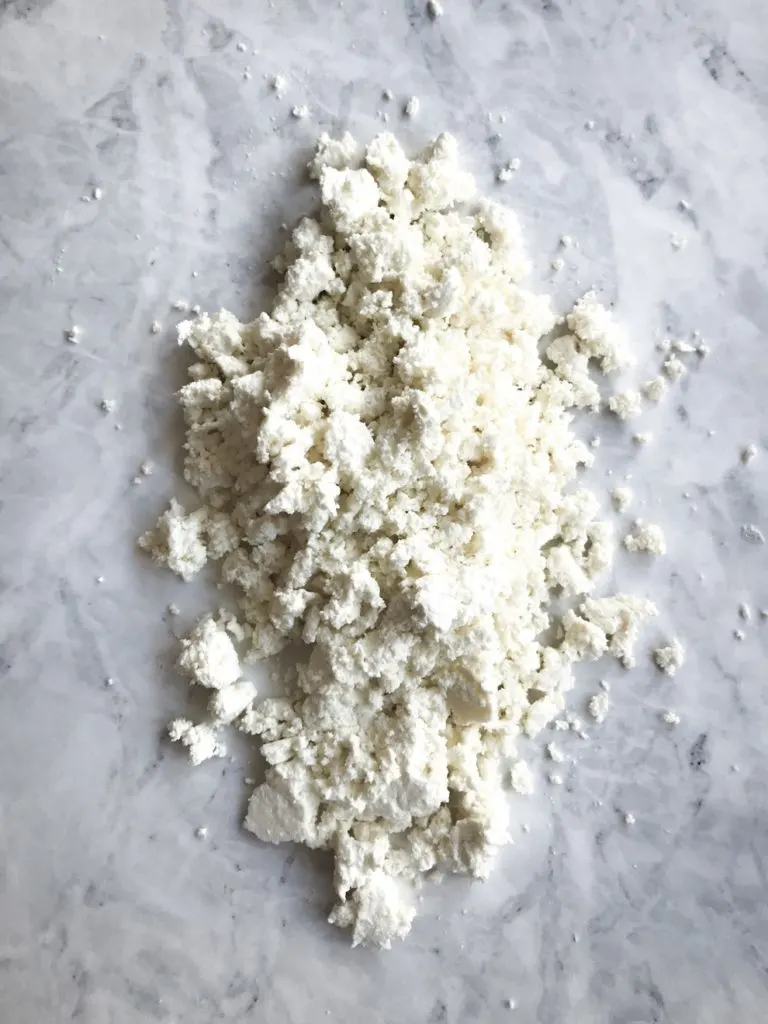

Tips and tricks for making perfect Rasmalai
Full fat cow’s milk (4%). The chhena requires the fat for binding. Using milk lower in fat will result in hard, crumbly Rasmalai. Using higher-fat milk (such a gold top or buffalo milk) will make the chhena release too much fat during kneading and the malai pieces will become greasy. I don’t recommend using nut milks or soy milk for making this Rasmalai. I have not tried making it with lactose-free milk or cow’s milk alternatives such as goat’s milk or sheep’s milk so cannot comment on how these would work.
No. This dessert is a labour of love and requires the chhena to be made from full-fat milk, boiled and then separated using a form of acid. My recipe uses lemon juice but you can also use distilled vinegar or citric acid dissolved in water.
Once pressed, use absorbent kitchen roll to pat the chhena dry. It then should be kneaded on a clean surface using the heel of your palm until completely smooth. This will take 10-12 minutes. Take your time and do not rush this step or take any shortcuts.
No. The chhena must be kneaded by hand when making Rasmalai. Using a food processor will overwork the chhena and could cause fat to be released. In the event this happens, the chhena will feel extremely greasy and will not come together in a cohesive mass. Once the fat is released, the chhena cannot be used for making Rasmalai. Kneading with your hands and feeling the smoothness of the chhena is one of my favourite parts of this recipe and a great skill that can also be applied to the art of making Rasgulla and Cham Cham.
Of course. Simply omit the vanilla pod from this recipe to make classic Rasmalai.
Use a sugar thermometer. Unless you are a pro confectioner and making Indian sweets every day, the traditional “tar” method (which is basically eyeballing it/testing using the “string” method), simply will not be accurate. Halwais can use this method because they are working with sugar syrup all the time. They are accustomed to the various stages of cooking sugar syrup and what each stage looks like. A sugar thermometer will ensure your syrup is perfect.
I get dozens of messages from people asking why their mithai is the wrong texture and 99% of the time it’s due to inaccurate sugar syrup temperatures. Eyeballing sugar syrup or using the traditional Indian “tar” method if you’re a home cook isn’t an accurate way of cooking, even when following a recipe that calls for this method to be used. I always use a sugar thermometer because I don’t work with sugar syrup every day and am not a pro confectioner. You can buy sugar thermometers online — they don’t have to be super expensive.
This could be due to a number of reasons. The most likely cause for them not expanding is that the sugar syrup is too concentrated. Thin it out with more hot water and test another piece. Ensure the syrup is boiling hard and the lid used to cover the pan is a tight-fitting one.
Again, broken pieces of chhena or broken finished rasmalai could be down to a number of reasons. Primarily, the issue could be due to the moisture content and texture of the raw chhena. If the chhena is too dry, your cooked rasgullas will be hard and crumbly. However, if your chhena is too moist, it will be too sticky to form into balls and will mean the cooked rasgullas are too soft.
This one is trickier to fix, especially if you’re working in a humid environment. If you haven’t yet kneaded the chhena, press it again. If you have already kneaded the chhena, you need to let the excess water evaporate away. Spread it thinly on the work surface to expose as much surface area as possible now either place a fan directly beside it and let it run for 15 minutes, or use the cool (COOL not hot — important!) setting on a hairdryer to blast it for 5 minutes before testing again to see if it rolls (I’m serious). If it doesn’t, keep doing it until it does. The chhena will need a good final knead.
This Rasmalai will keep well for a week, refrigerated in an airtight container.
This Rasmalai is not suitable for freezing.
How to serve Vanilla Rasmalai
Chill the Rasmalai in the fridge for 8-10 hours. This is because resting will give the flavours a chance to develop and the chhena patties to absorb the masala doodh.
The result will be spongy, soft Rasmalai that keeps its’ shape beautifully.
Serve the Rasmalai cold, straight from the fridge for a gorgeous dessert following an Indian meal.
This is a popular choice at Indian wedding banquets.

Allergies
This Rasmalai is suitable for those with gluten-free diets.
However, many commercial brands of milk powder are manufactured alongside wheat and other flours in flour mills.
Please check packaging if you are using milk powder and/or are preparing this for someone with a severe wheat or gluten allergy.
Similarly, this applies for those with a soy or nut allergy.
Ingredients you’ll need to make Vanilla Rasmalai
Recipe care with measurements below.

- Full-fat milk
- Granulated sugar
- Vanilla pod
- Green cardamom pods
- Saffron
- Lemon juice
- Water
- Cornflour (cornstarch), not cornmeal
- Pistachios
- Dried rose petals (optional)
Step-by-step instructions for making Rasmalai
1. Make the chhena (paneer/cheese)


Pour the milk into a large, heavy-based pan and bring to a rolling boil. Keep stirring constantly to ensure the milk doesn’t settle and burn at the base of the pan.
Switch the heat off and add the lemon and water mixture a tablespoon at a time, stirring briefly between each addition until the milk curdles.
Once the curds have separated from the whey, add the ice water to stop the cooking process. Allow to stand for 5 minutes.
Line a colander with muslin or cheesecloth and place it in the sink. If you’d like to reserve the whey for another recipe later, you can place the colander in a large bowl to catch the drained liquid. Alternatively, let it drain away.
Carefully pour the mixture into the lined colander. Remove the bowl from under the colander (if using). Rinse the curds under lukewarm, running water (at least 3-4 minutes) to remove any sourness from the lemon juice.
Gather the corners of the cloth and twist to enclose the curds. Gently twist the cloth to remove excess moisture. Place the bundle back inside the colander resting on a plate or bowl.
Apply approximately 1kg of pressure on top of bundle. Allow to press for 30 minutes.
2. Make the Rasmalai pieces

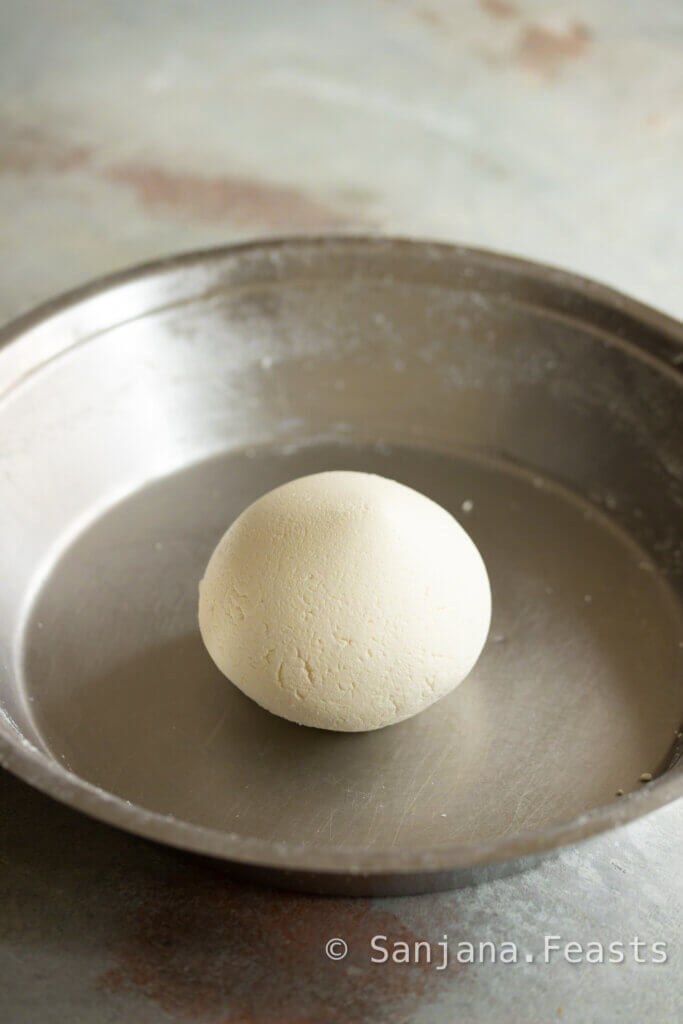
Remove the weights from on top of the chenna bundle and unwrap. Place the chenna onto a large, clean work surface. Dab with paper towels to remove any excess moisture.
Break the chenna into rough pieces and begin to knead it with your hand. Use the heel of your palm to spread the chenna as thinly as possible against the work surface, using a long, sliding motion.
Apply pressure to press out all graininess and gather the mixture together again.
Repeat this action until all traces of graininess have disappeared and the chenna is smooth. It should take 15-20 minutes. It should be soft and smooth, not grainy or greasy.

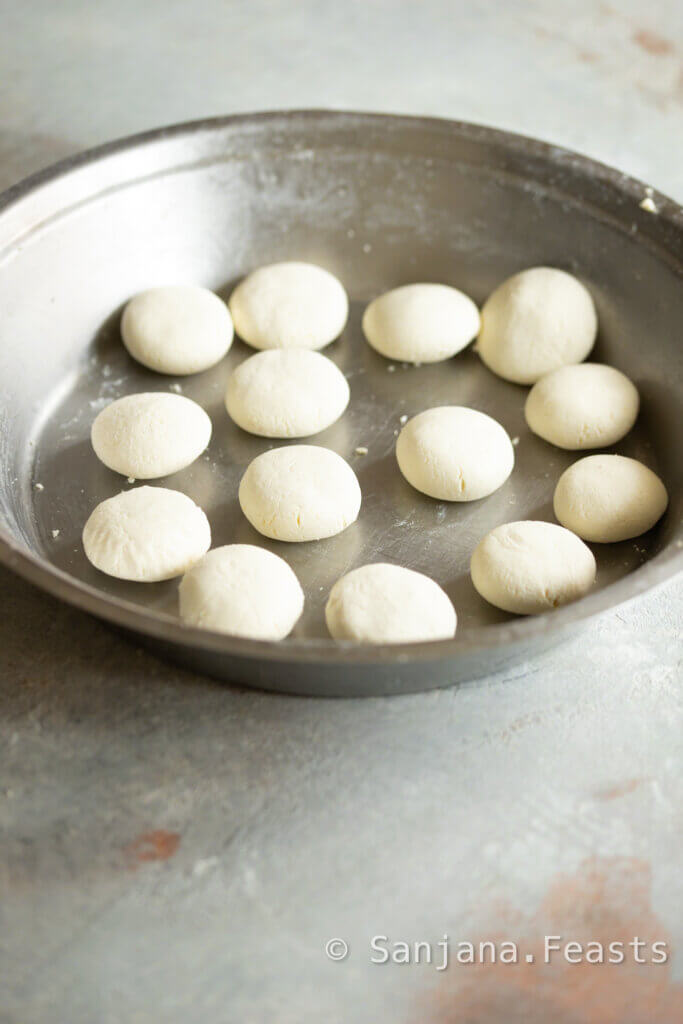
Divide the chenna into 14 pieces (or make 16 smaller ones). Lightly oil your hands and roll into balls, pressing against your palms to ensure the ball is smooth and crack free.
Lightly press to form a disc, about 2cm in diameter. Repeat for all the pieces.
3. Make the rasmalai milk

Pour the milk into a large, heavy-based saucepan and bring to a gentle simmer. Add the ground cardamom seeds, saffron, vanilla beans and pod, sugar and pistachios.
Bring to a boil and turn the heat down to low.
Allow to simmer, uncovered until reduced by half, about 30 minutes.
Stir often to avoid the milk burning on the base of the pan. Once reduced, remove from the heat, cover with a lid and set aside.
4. Cook the rasmalai pieces

In a large, wide saucepan combine the water, sugar and lemon juice. Stir well. The pan should be large enough to hold all the pieces at once, with room for them to expand. Bring to a boil.
Allow to boil until the syrup reaches ‘thread’ consistency (105ºC/220ºF).
Bring the syrup to a rolling boil. Carefully place all the rasmalai pieces into the syrup. Pour in the cornflour slurry and immediately cover. The pan should be set over the highest heat possible.
Boil hard for 18 minutes exactly, until the malai pieces have doubled in size. Keep a kettle or separate pan of hot water aside and ladle around 65 ml hot water into the pan every 5 minutes during cooking.
This will ensure the sugar syrup remains at the same consistency. If the malai pieces are turning dark, the syrup is too concentrated. Add hot water and bring it back to the correct temperature.
Once 18 minutes are up, turn the heat down and remove the cooked rasmalai pieces with a slotted spoon and drain excess syrup.
Place the pieces into a bowl of cold water immediately to stop the cooking process.
Allow to sit in the water for 10 minutes and then very gently, press each piece between your palms to remove excess liquid and to flatten it and remove excess liquid.

Arrange the cooked rasmalai pieces in a large, deep serving dish and pour the sweet vanilla milk (room temperature) over the top.
Cover and refrigerate for at least 8 hours for the malai pieces to absorb the milk. Garnish with the optional dried rose petals.
Special equipment
Finally, my recipe requires the use of a sugar thermometer. I use this one, however you can use any that gives an accurate reading for your sugar syrup.
Vanilla Rasmalai recipe | How to make Rasmalai | Soft Rasmalai recipe in English
Vanilla Rasmalai

Soft, spongy cheese dumplings soaked in sweet vanilla, cardamom and saffron milk. Inspired by the classic Bengali dessert, this version is served chilled and the flavours are reminiscent of the Indian ice cream, kulfi.
Ingredients
For the rasmalai milk:
- 1.8 L full-fat milk
- 75g granulated sugar
- 1 whole vanilla pod, split and scraped (reserve the pod)
- 4 green cardamom pods, seeds ground
- 1 small pinch saffron, 10-15 strands
- 1 tbsp slivered pistachios (optional)
For the rasmalai pieces:
- 2 L full-fat milk
- 3 tbsp lemon juice mixed with 1 tbsp water
For the sugar syrup:
- 2 L water
- 500 g granulated sugar
- 1 tsp lemon juice
- 3 tsp cornflour mixed with 3 tbsp cold water
You will also need:
- 1 L cold water
- 8-10 dried rose petals, to garnish (optional)
Instructions
For the Rasmalai pieces:
- Pour the milk into a large, heavy-based pan and bring to a rolling boil. Keep stirring constantly to ensure the milk doesn't settle and burn at the base of the pan.
- Switch the heat off and add the lemon and water mixture a tablespoon at a time, stirring briefly between each addition until the milk curdles. Once the curds have separated from the whey, add the ice water to stop the cooking process. Allow to stand for 5 minutes.
- Line a colander with muslin or cheesecloth and place it in the sink. If you’d like to reserve the whey for another recipe later, you can place the colander in a large bowl to catch the drained liquid. Alternatively, let it drain away.
- Carefully pour the mixture into the lined colander. Remove the bowl from under the colander (if using). Rinse the curds under lukewarm, running water (at least 3-4 minutes) to remove any sourness from the lemon juice.
- Gather the corners of the cloth and twist to enclose the curds. Gently twist the cloth to remove excess moisture. Place the bundle back inside the colander resting on a plate or bowl. Apply approximately 1kg of pressure on top of bundle. You can use 3-4 tins of beans or a pan of water. Anything stable that will be heavy enough to press out excess whey. Allow to press for 30 minutes.
For the rasmalai milk:
- Pour the milk into a large, heavy-based saucepan and bring to a gentle simmer. Add the ground cardamom seeds, saffron, vanilla beans and pod, sugar and pistachios. Bring to a boil and turn the heat down to low.
- Allow to simmer, uncovered until reduced by half, about 30 minutes. Stir often to avoid the milk burning on the base of the pan. Once reduced, remove from the heat, cover with a lid and set aside.
- When cool, strain the milk to remove any skin that may have formed during the boiling process and the vanilla pod. You can pop any saffron back into the milk. Stir in the almonds and pistachios. This step might seem excessive but I promise it will make a huge difference to the finished dessert. Those excess pieces of malai from boiling the milk can really affect the finish of the Rasmalai.
To make the malai pieces (rasgulla) from chhena:
- Remove the weights from on top of the chenna bundle and unwrap. Place the chenna onto a large, clean work surface. Dab with paper towels to remove any excess moisture.
- Break the chenna into rough pieces and begin to knead it with your hand. Use the heel of your palm to spread the chenna as thinly as possible against the work surface, using a long, sliding motion. Apply pressure to press out all graininess and gather the mixture together again. Repeat this action until all traces of graininess have disappeared and the chenna is smooth. It should take 15-20 minutes. It should be soft and smooth, not grainy or greasy.
- Divide the chenna into 14 pieces (or make 16 smaller ones). Lightly oil your hands and roll into balls, pressing against your palms to ensure the ball is smooth and crack free. Lightly press to form a disc, about 2cm in diameter. Repeat for all the pieces.
To cook the rasmalai pieces:
- In a large, wide saucepan combine the water, sugar and lemon juice. Stir well. The pan should be large enough to hold all the pieces at once, with room for them to expand. Bring to a boil. Allow to boil until the syrup reaches 'thread' consistency (105ºC/220ºF).
- Bring the syrup to a rolling boil. Carefully place all the rasmalai pieces into the syrup. Pour in the cornflour slurry and immediately cover. The pan should be set over the highest heat possible.
- Boil hard for 18 minutes exactly, until the malai pieces have doubled in size. Keep a kettle or separate pan of hot water aside and ladle around 65 ml hot water into the pan every 5 minutes during cooking. This will ensure the sugar syrup remains at the same consistency. If the malai pieces are turning dark, the syrup is too concentrated. Add hot water and bring it back to the correct temperature.
- Once 18 minutes are up, turn the heat down and remove the cooked rasmalai pieces with a slotted spoon and drain excess syrup. Place the pieces into a bowl of cold water immediately to stop the cooking process. Allow to sit in the water for 10 minutes and then very gently, press each piece between your palms to remove excess liquid and to flatten it and remove excess liquid.
- Arrange the cooked rasmalai pieces in a large, deep serving dish and pour the sweet vanilla milk (room temperature) over the top.
- Cover and refrigerate for at least 8 hours for the malai pieces to absorb the milk. Garnish with the optional dried rose petals.
Notes
The Rasmalai can be kept in the fridge for up to a week.
This Rasmalai is not suitable for freezing.
Nutrition Information:
Yield: 8 Serving Size: 1 gramsAmount Per Serving: Calories: 689Total Fat: 10gSaturated Fat: 6gTrans Fat: 0gUnsaturated Fat: 3gCholesterol: 39mgSodium: 261mgCarbohydrates: 103gFiber: 0gSugar: 104gProtein: 17g
Pin this Vanilla Rasmalai recipe for later!

If you like Vanilla Rasmalai, you’ll love this Ice Cream Burfi
Love Sanjana
11 Burfi Recipes to Satisfy Your Sweet Tooth
Learn how to make the traditional South Asian milk fudge, burfi with these easy and creative recipes.
9 ingredients and 30 minutes prep and cook time is all you need.
This plain milk powder burfi is the Indian sweet recipe my followers request the most. I think White Burfi has such a simple charm and universal appeal.
This quick and simple recipe for the milky, fudgy South Asian sweet, Mango Burfi requires just a handful of ingredients and the texture is just like shop bought burfi!
A must for pistachio lovers! Here's an easy recipe for melt-in-the-mouth Indian pistachio burfi made with REAL PISTACHIOS.
It has true pistachio flavours (not just food colour or pistachio essence) and of course, gold and silver leaf on top.
Perfect for gifting. Your family and friends will love it!
Perfect Besan Barfi is a meltingly soft and creamy Indian sweet with roasted gram (chickpea) flour, sugar and nuts.
Here's an entirely foolproof recipe that delivers amazing results every time.
Sweet condensed milk burfi with a hidden layer of birthday cake and sprinkles!
I created this recipe using my favourite eggless cupcake recipe and it's always a hit at parties.
What would you say if I told you that chocolate burfi + cookie dough had a party in my kitchen and things got pretty wild?
Layers of cardamom burfi, classic chocolate chip cookie dough and milk chocolate combined to create the wickedest chocolate burfi you’ll ever experience.
Mohanthal is a buttery, melt-in-the-mouth Indian sweet with gram flour, cardamom, saffron and mace. It comes from Gujarat in western India.
Enjoy as a square or as a hot fudge-like pudding with ice cream.
This super-duper chocolatey take on Indian Burfi puts Easter chocolate to work for a totally cute springtime sweet! It’s so easy and quick to make.
It is adapted from my Perfect Plain White Burfi recipe and it’s completely foolproof.
Each square of burfi is perfectly crumbly and melts in the mouth. Indian sweets have never been so simple!
These diamonds of sweet fudge have a delicious, crumbly and chewy texture from the ground cashew nuts.
Laced with ground cardamom and vanilla extract, floral undertones are created beneath a creamy layer of white chocolate.
As soon as you take a bite, the fudge begins to melt on your tongue and a burst of subtle flavours take over. Bliss.
You can make this in 10 minutes flat in the microwave. I love the sweet aromas of pandan, the Asian equivalent of vanilla.
Layer up the flavours, set and cut into large squares.
Perfect Seeroh (Sooji Burfi) is the ultimate quick-fix Indian dessert. My recipe can be ready to eat in as little as 20 minutes! I've pulled together all my best tips for making this iconic, buttery semolina sweet at home.



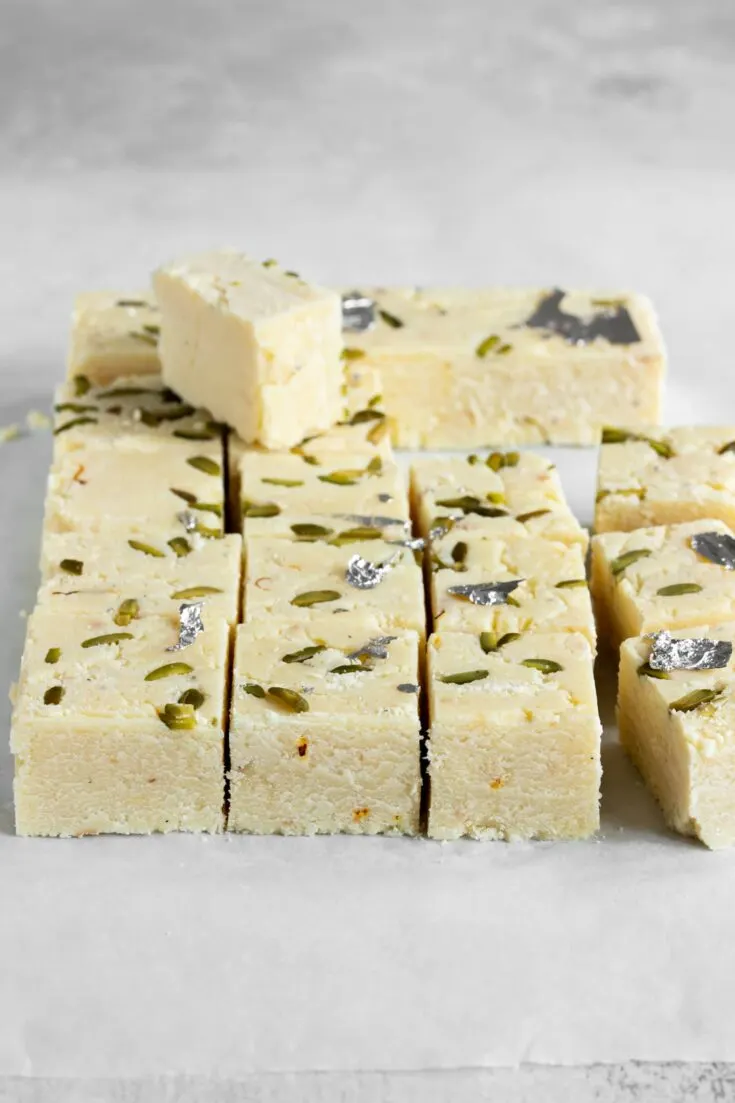
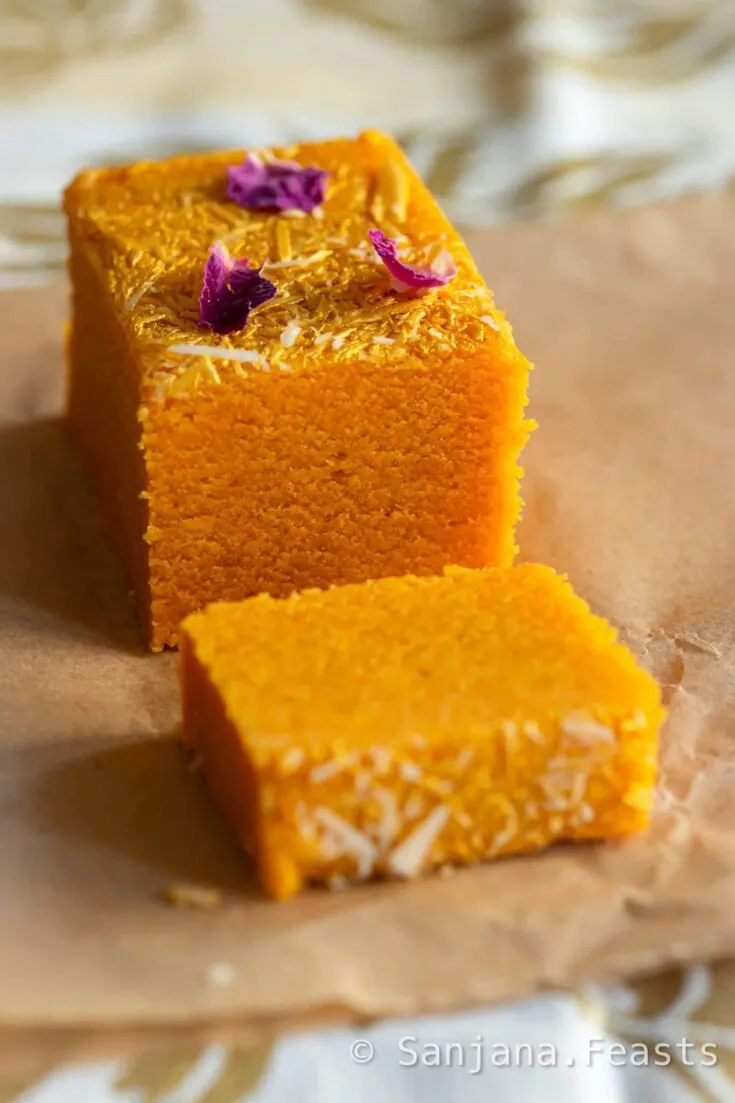

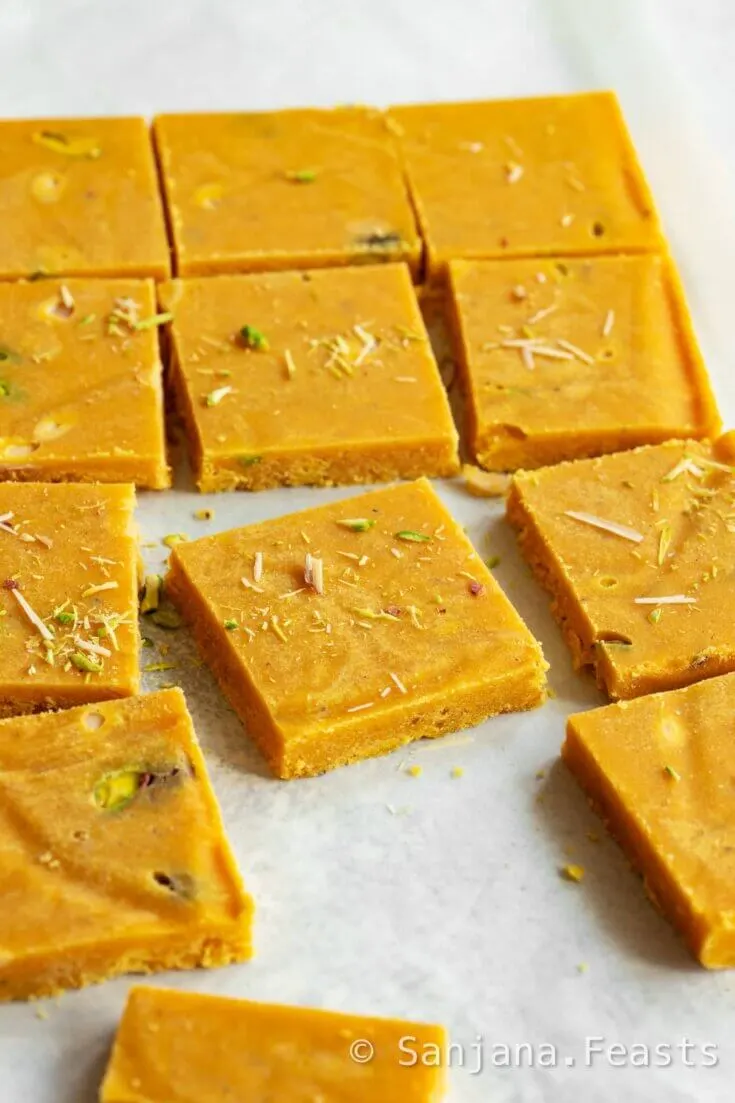
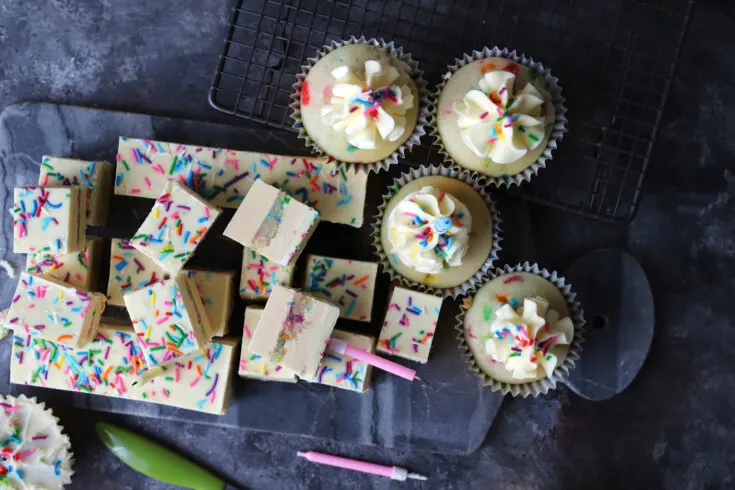



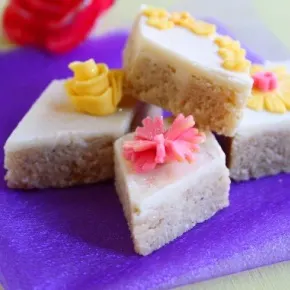

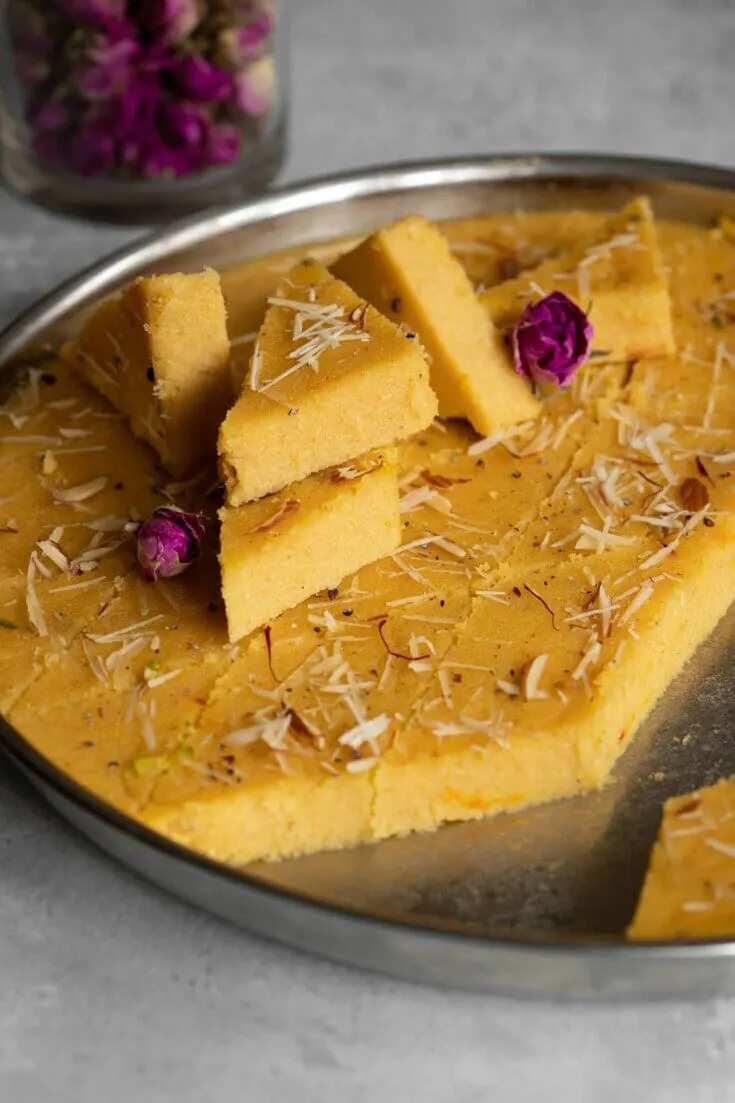
Sabrina
Monday 1st of February 2021
Thank you for another wonderful recipe. I'll admit, I did utilize aspects of two separate recipes, but I live your tips and tricks, as well as the less conventional ingredients and methods. They're super helpful. My mom loved it even more than her favorite restaurant's :)
Himesh Tanna
Wednesday 20th of November 2019
Sensational — can’t believe I could make this at home but I did with help from your recipe. I have no words. Thanks for sharing such good instructions. It was like shop bought but tastier.